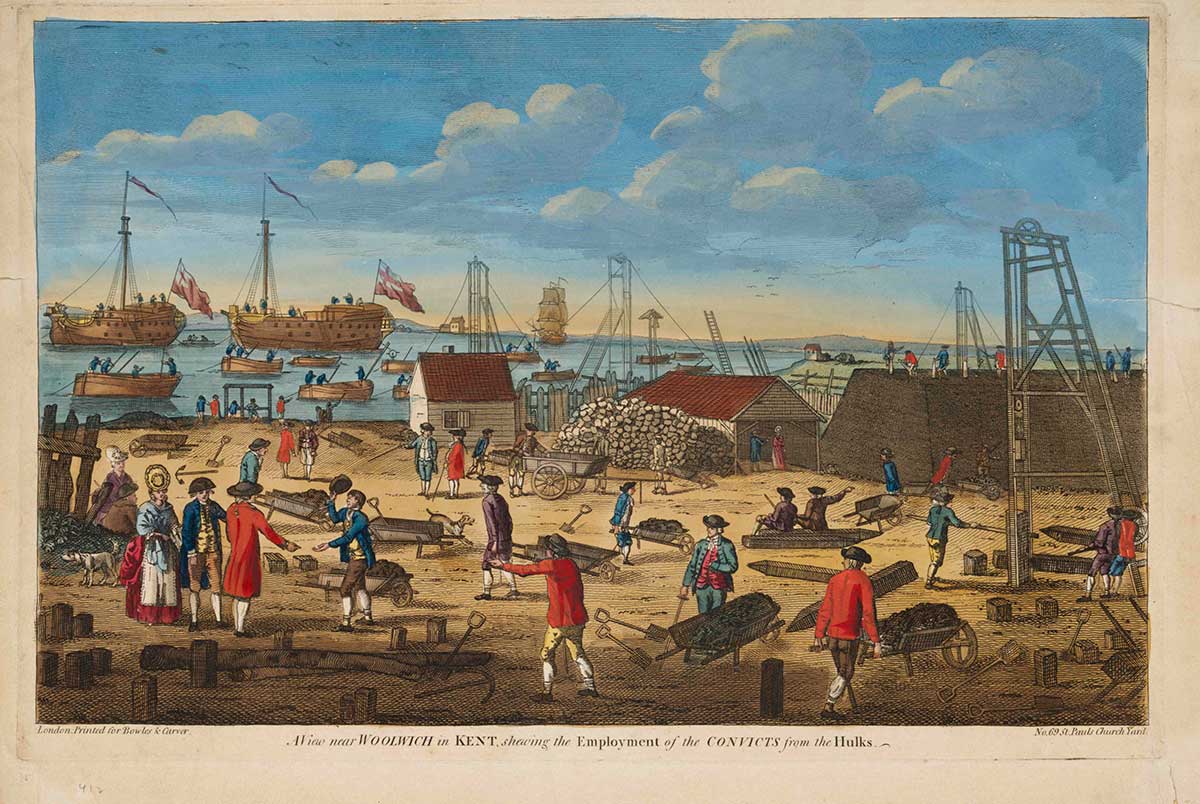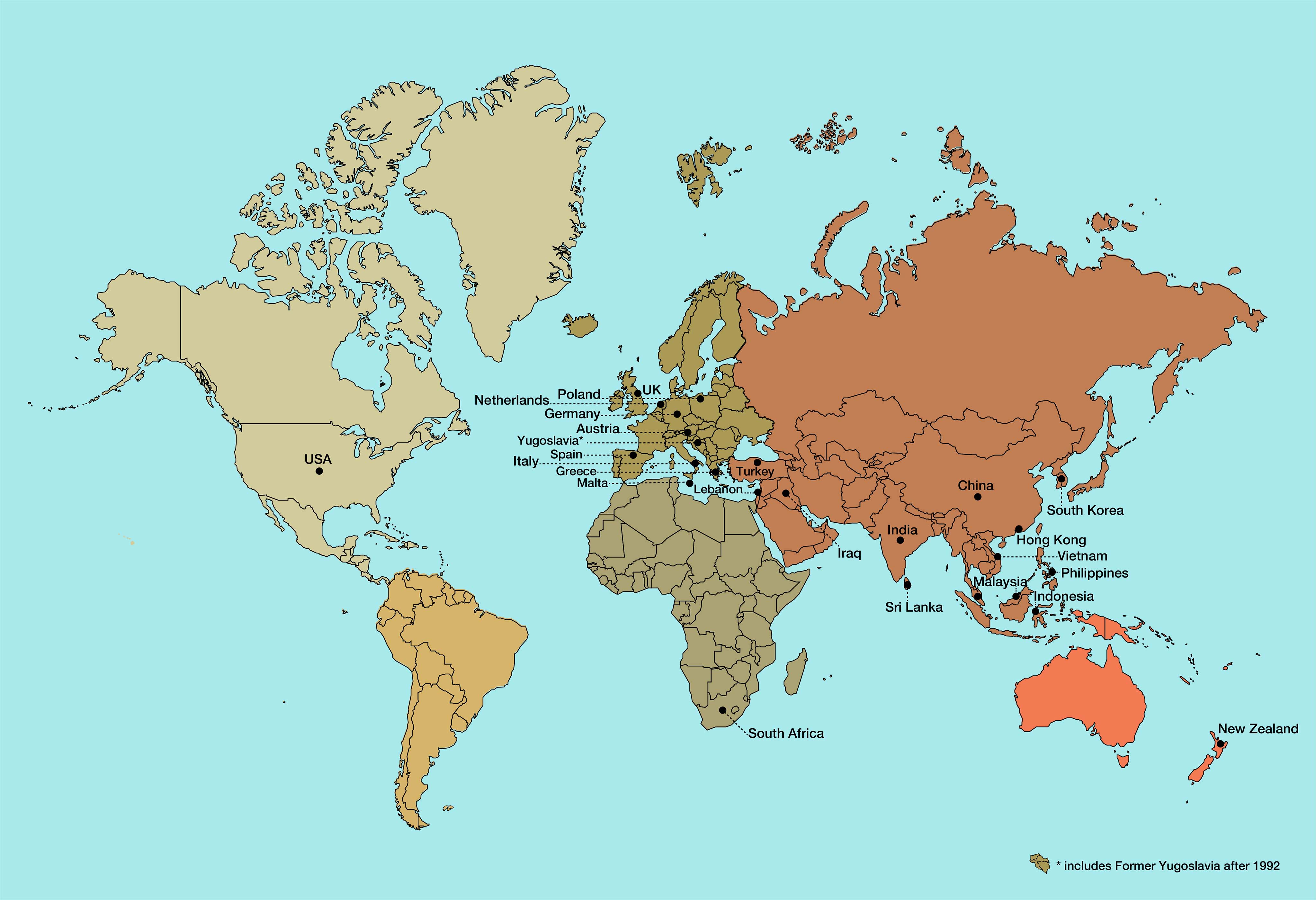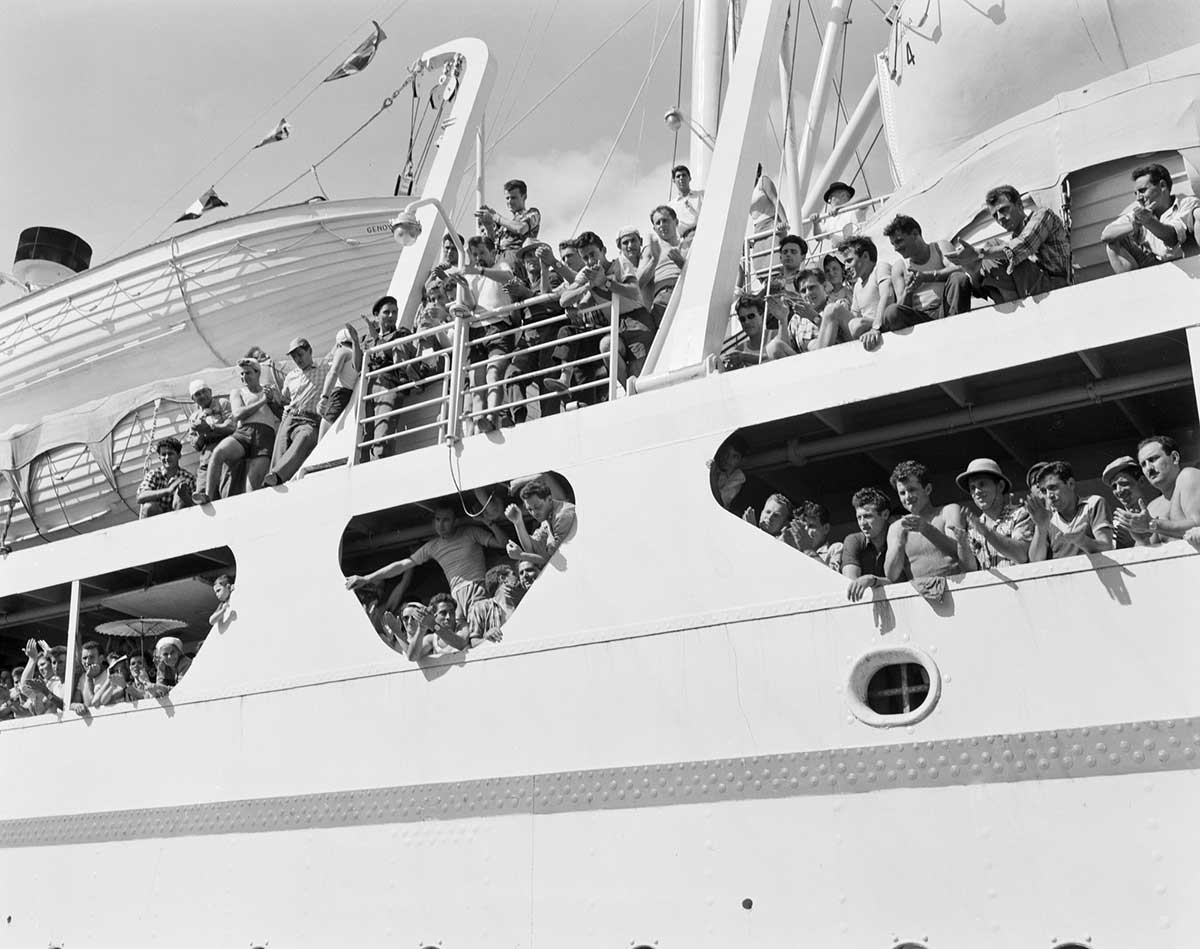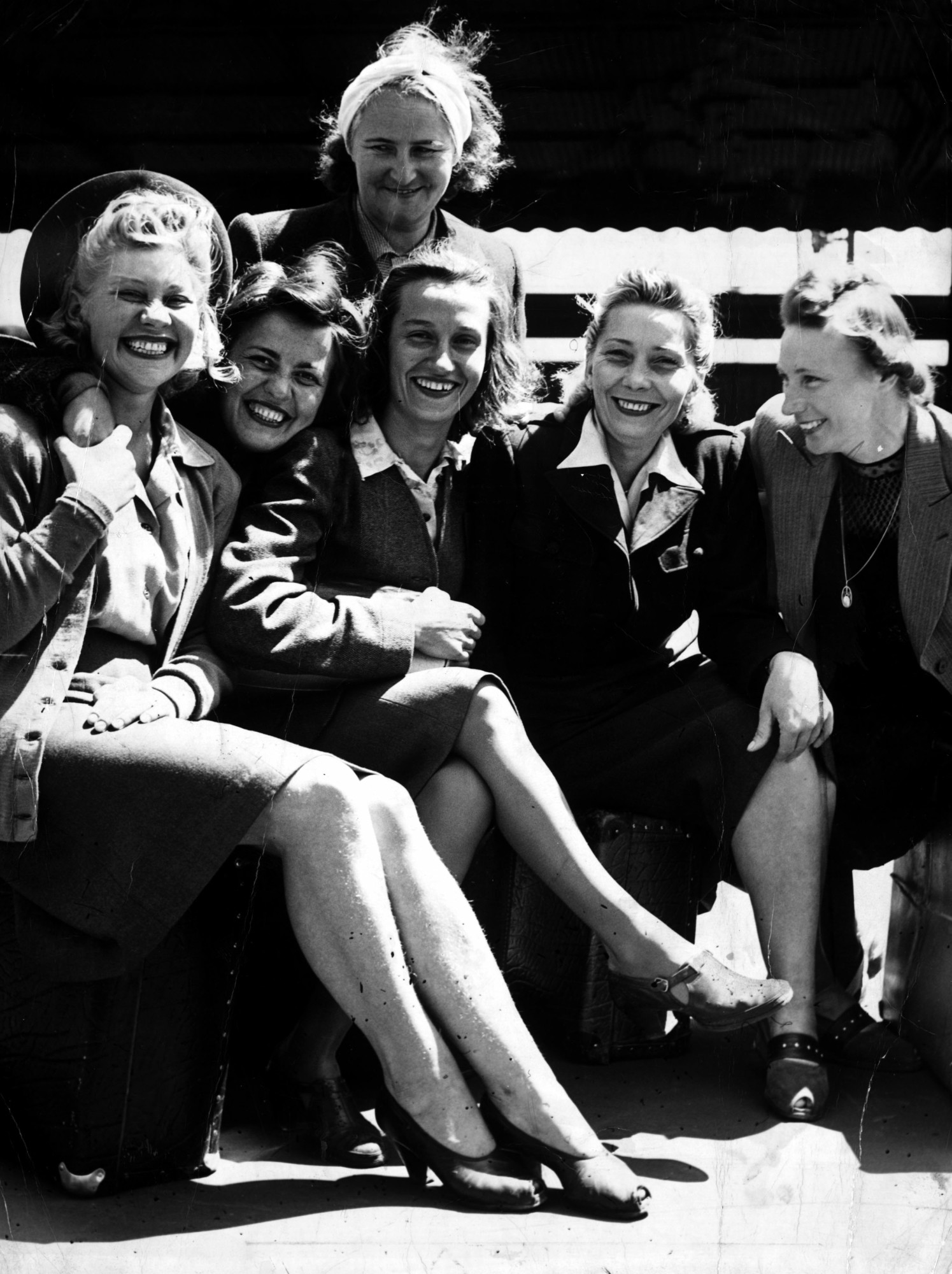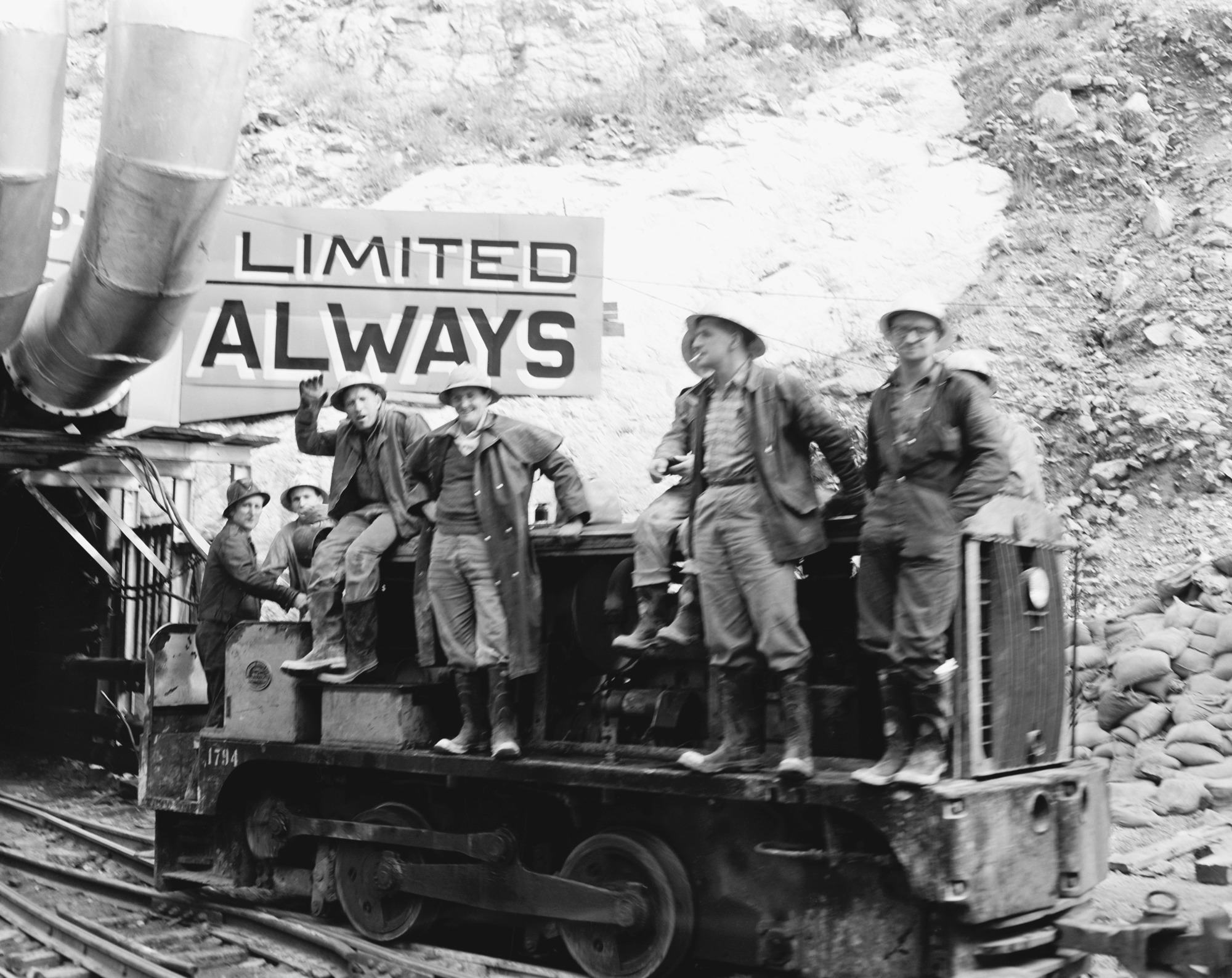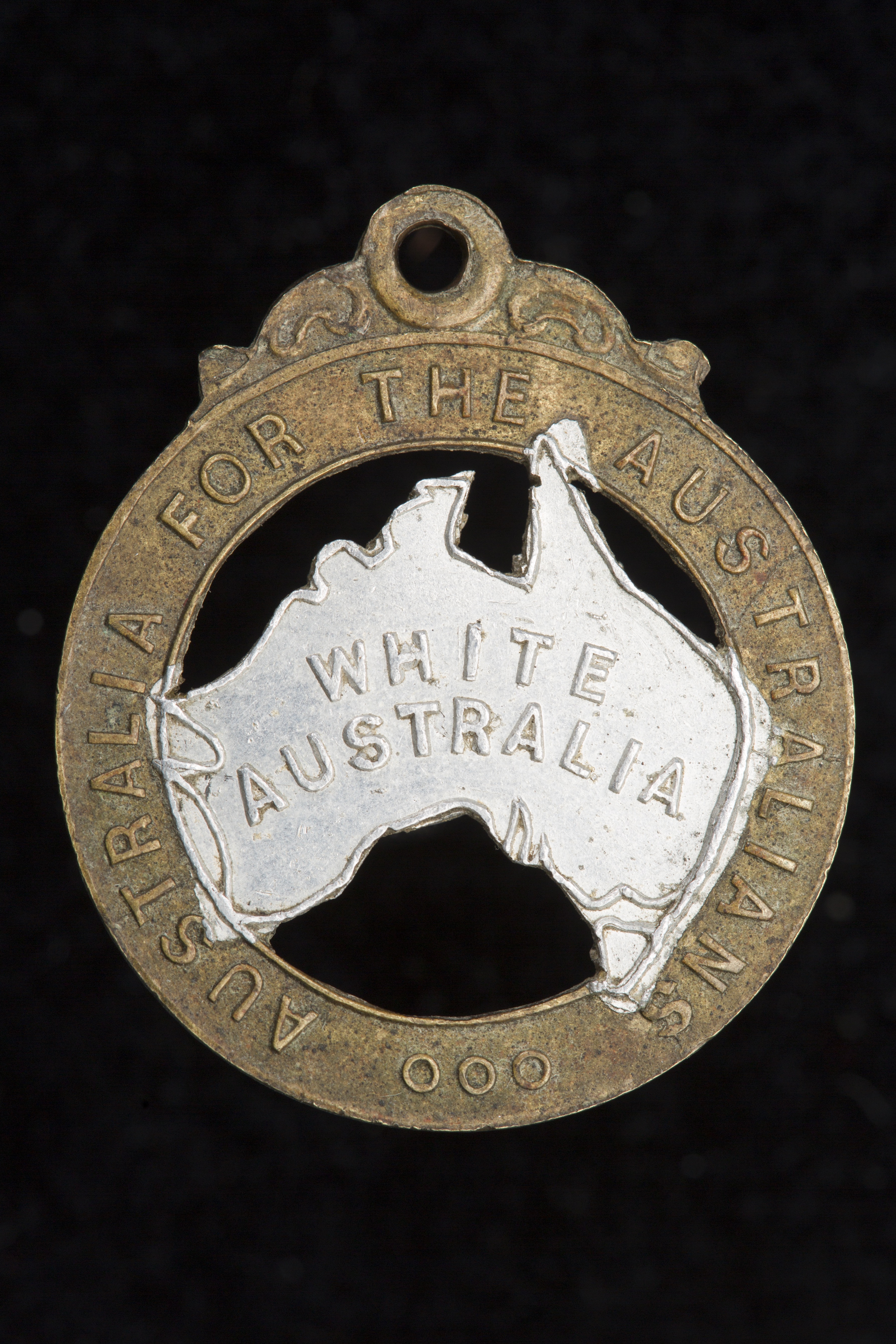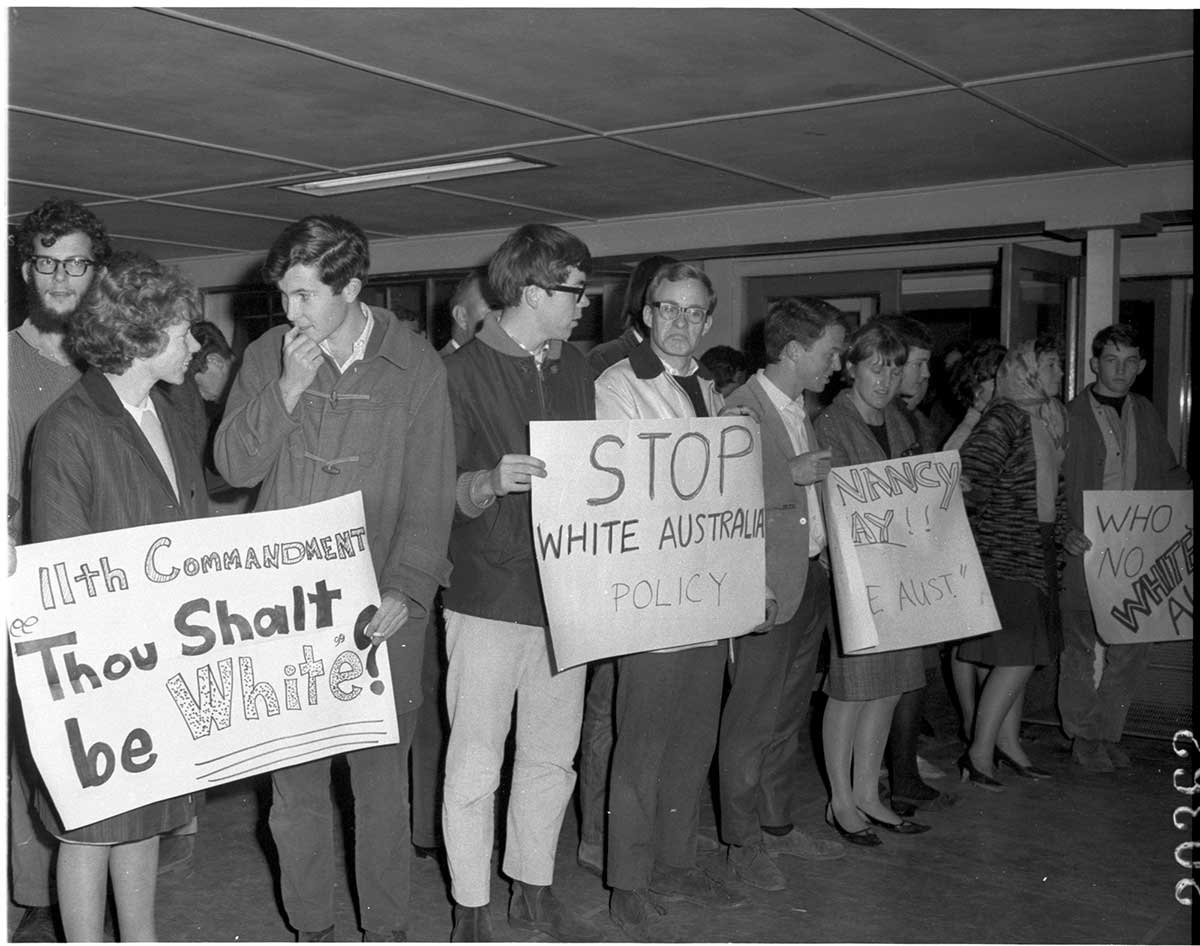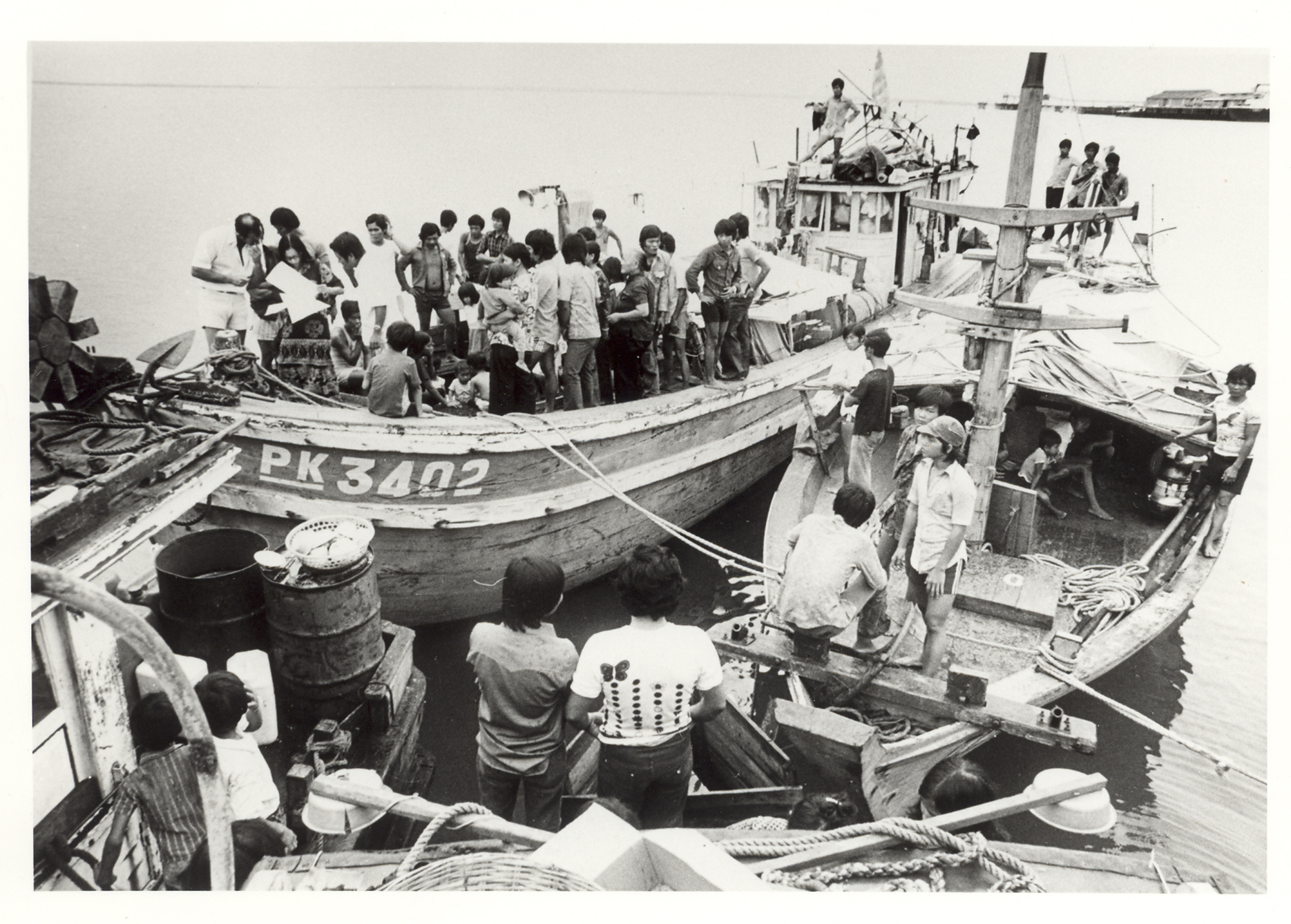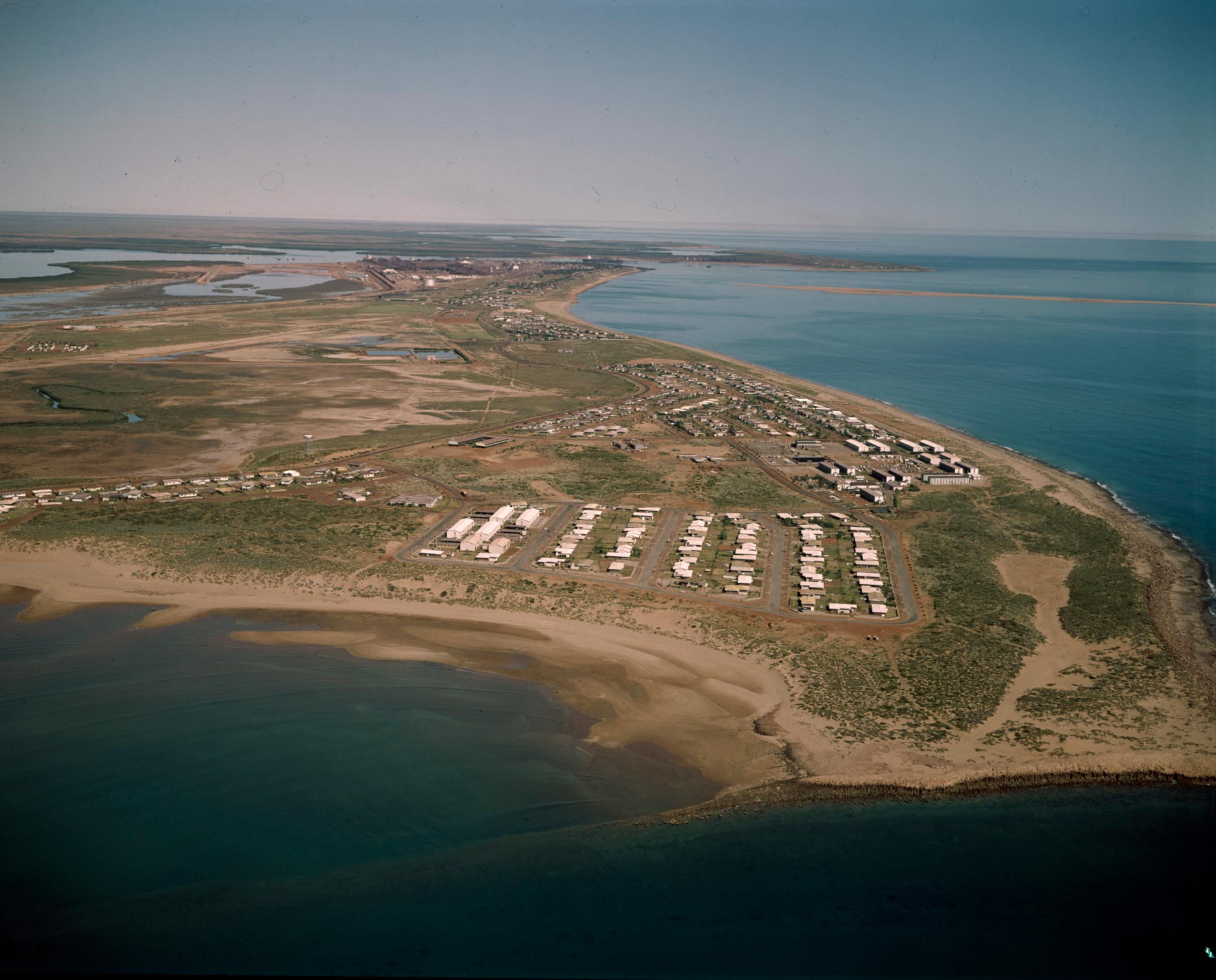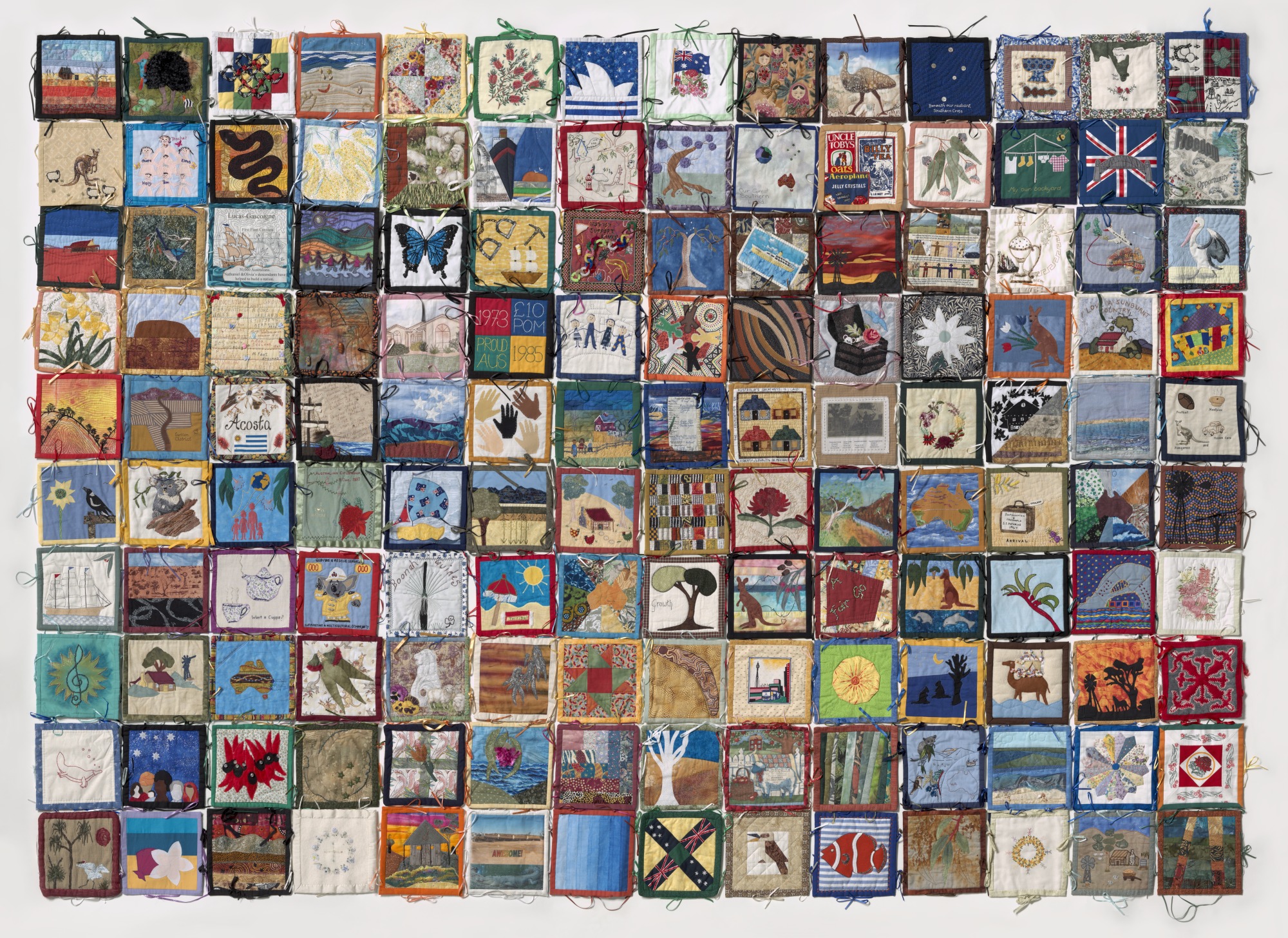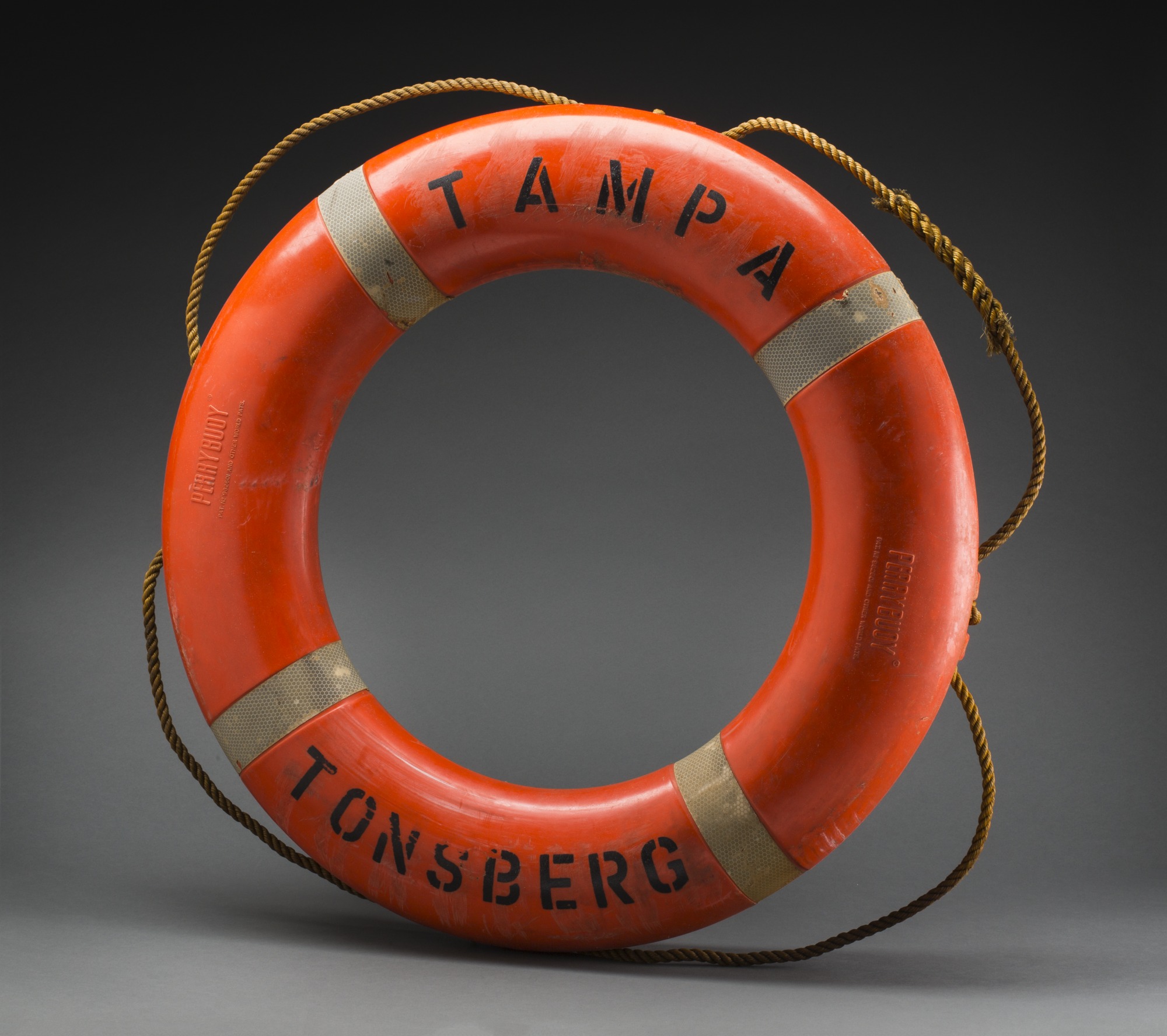Migration experiences Defining Moments, 1945–present

- Year level 10
- Investigations 4
- Activities 17
- Curriculum topic Migration experiences
1. Overview of the learning module
Introduction
This learning module provides resources and classroom activities for teachers to use in their Australian Curriculum: Humanities and Social Sciences Year 10 classrooms.
It supports the History knowledge and understanding strand for Depth Study 2 The Globalising World, Migration experiences (1945–present).
The learning module focuses on three key inquiry questions in the history element of the curriculum:
- Who has migrated to Australia since the war?
- How did governments organise it?
- How was the White Australia policy changed?
- How have some asylum seekers become a contested area of postwar migration?
The learning module is self-contained, and can be used in any of the following ways:
- as whole class activities with all students studying a number of Defining Moments in Australian History that help them understand aspects of Australia’s history
- distributed between small groups, with students reporting back on their findings to the whole class
- as selected enrichment activities for individual students.
The investigations provide a rich digital resource for classroom use. They include contextual information, documents, images, scaffolded comprehension, analytical and extension questions, and individual, group and class activities. Using these materials and activities, students can explore aspects of twentieth century Australian history through text, images and objects.
The learning module has been designed to draw on the National Museum of Australia’s Defining Moments in Australian History, together with some supplementary resources.
What constitutes a defining moment in Australian history, and why some issues and situations can be considered more significant than others, is an underlying theme that can be raised with students throughout the module.
Module snapshot
The learning module can be used to create a set of preliminary ideas, understandings and questions that will help students investigate the topic in more detail.
It contains:
- Setting the scene 1
Teachers can use the hypothetical to introduce the concept of migration in a very personal way. Migration involves people. If students were to be migrants (and some of them may be) how would they expect to live in the new country? This may be a sensitive issue with some students, while for others it might be a chance for them to use their experience to help other students. Teachers will need to use their discretion in how the activity is used.
Teachers are encouraged as part of their unit pretesting processes to explore with their students a range of different key definitions used by interested parties when discussing and understanding migration, and the related issues (government and media choices of key words, and common understandings by the public). - Setting the scene 2–3
Students should look at the list of key questions that can be addressed in the topic, and which they can be expected to be able to answer by the end of their study. The teacher and the students may add to this list. They return to these questions in ‘Bringing it together’.
The Background information can be used to set the context for the first starting point investigation into the waves of postwar migration that Australia has experienced.
Teachers could break the students into eight teams. Each team gets one paragraph to read, discuss and then present as a mini-news report to the class as a timeline of key periods. The class can ask questions of each team (about the facts, and possible theories).
Investigation 1.1
In this activity students are introduced to an important fact – that there have been both changes and continuities in the major source countries for migration to Australia. By analysing the statistics students will recognise the continuing contributions of Britain and New Zealand, the immediate postwar emphasis on southern and eastern Europe, and the gradual swing towards various countries in north, south and south-east Asia. As with steps 1 and 2, this is an activity that all students should be involved in.
Investigations 2.1–2.4: Postwar European migration
Investigations 3.1–3.4: The end of the White Australia policy
Investigations 4.1–4.3: Australian refugee policy
Teachers might have all students explore the three emphases of European migration, White Australia and Asian migration, or modern refugee policies; or they may divide these among groups which can report back their findings on particular aspects to the whole class. Given that the activities and investigations are limited in scope and size – that is, they are starting points – teachers may prefer the first approach.
Having investigated the various Defining Moments, students will have developed a preliminary set of ideas and thoughts about postwar migration, and these will provide direction for them in using more material to explore the major aspects. - Bringing it together
Students develop preliminary conclusions and complete as many of the key questions as possible. They may need to undertake further research to fully answer some of the key questions.
To help students further reflect on the migration experiences they have encountered in this learning module they could create a museum display that either draws on objects from the National Museum of Australia’s Collections Explorer database or select other objects that they feel best represent the range of experiences they want to show.
Finding out more:
For several of the investigations National Museum of Australia resources are suggested as well as other resources that students might use.
2. Student activities
Student activities
Setting the scene: Migration and Australia
Investigation 1: What have been the ‘waves’ of migration?
Investigation 2: Postwar European migration
Investigation 3: Ending the White Australia policy
Investigation 4: Australian refugee policy
Bringing it together
3. Relevant Defining Moments in Australian History
The learning module draws on the resources on the Defining Moments in Australian History website, together with supplementary materials.
Defining Moments that are relevant to the inquiry questions in the curriculum include:
|
1901 |
Investigation 3 |
|
|
1945 |
Investigation 2 |
|
|
1949 |
Chifley government begins Snowy Mountains Hydro-Electric Scheme |
Investigation 2 |
|
1966 |
Investigation 3 |
|
|
1976 |
Investigation 3 |
|
|
1978 |
Investigation 2 |
|
|
1991 |
Investigation 4 |
|
|
2001 |
Australian troops take control of Tampa carrying rescued asylum seekers |
Investigation 4 |
Simplified versions of many of the relevant Defining Moments are also available:
|
1901 |
‘Australia for the Australians’ — White Australia policy established |
Investigation 3 |
|
1945 |
Investigation 2 |
|
|
1949 |
‘A plan for the whole nation’ — Snowy Mountains Hydro Scheme begins |
Investigation 2 |
|
1966 |
‘Becoming a multicultural nation’ — End of the White Australia policy |
Investigation 3 |
|
1976 |
‘We would like permission to stay in Australia’ — First arrival of Vietnamese refugees by boat |
Investigation 3 |
|
1991 |
‘The start of mandatory detention’ — Port Hedland detention centre opens |
Investigation 4 |
|
2001 |
‘Tampa Affair’ — Australian troops take control of Tampa carrying rescued asylum seekers |
Investigation 4 |
4. Australian Curriculum level and focus
Historical knowledge and understanding
Students will cover the following areas:
- The waves of post-World War II migration to Australia, including the influence of significant world events (ACDSEH144)
- The impact of changing government policies on Australia's migration patterns, including abolition of the White Australia Policy, ‘Populate or Perish’ (ACDSEH145)
- The impact of at least ONE world event or development and its significance for Australia, such as the Vietnam War and Indochinese refugees (ACDSEH146)
Historical skills
Students will exercise the following historical skills:
Chronology, terms and concepts
- Use chronological sequencing to demonstrate the relationship between events and developments in different periods and places (ACHHS182)
- Use historical terms and concepts (ACHHS183)
Historical questions and research
- Identify and select different kinds of questions about the past to inform historical inquiry (ACHHS184)
- Evaluate and enhance these questions (ACHHS185)
- Identify and locate relevant sources, using ICT and other methods (ACHHS186)
Analysis and use of sources
- Identify the origin, purpose and context of primary and secondary sources (ACHHS187)
- Process and synthesise information from a range of sources for use as evidence in an historical argument (ACHHS188)
- Evaluate the reliability and usefulness of primary and secondary sources (ACHHS189)
Perspectives and interpretations
- Identify and analyse the perspectives of people from the past (ACHHS190)
- Identify and analyse different historical interpretations (including their own) (ACHHS191)
Explanation and communication
- Develop texts, particularly descriptions and discussions that use evidence from a range of sources that are referenced (ACHHS192)
- Select and use a range of communication forms (oral, graphic, written) and digital technologies (ACHHS193)
Interdisciplinary thinking
Students will engage with the concepts of:
- significance
- continuity and change
- cause and effect
- place and space
- interconnections
- roles, rights and responsibilities
- perspectives and action.
Cross-curriculum priorities
Students will be involved in additional learning about aspects of:
- Aboriginal and Torres Strait Islander Histories and Cultures
- Asia and Australia’s Engagement with Asia
Source: The Australian Curriculum Humanities and Social Sciences v8.3, December 2016, viewed 1 November 2018
5. History outcomes matrix
All case studies in the learning module have been designed to help students develop the knowledge and skills outcomes specified in the Australian Curriculum — History. At the end of each case study teachers could use this matrix to help guide student discussion about what they have achieved from the case study. The matrix is suitable to be used from Years 5–10, but with teachers guiding the discussion as appropriate to the particular class. It could also be used for assessment purposes.
| Outcome | Elaboration or Explanation | Applying this to each case study |
|---|---|---|
| KNOWLEDGE | Comprehending what happened factually. | What happened? |
| UNDERSTANDING | Being able to explain what happened and why. | Explain why it happened. |
| CHRONOLOGY | Knowing how events occurred in time and place. | Explain how events unfolded. |
| CAUSE AND EFFECT | Understanding why events occurred as they did and the impacts or effects they had. | Explain the causes of the event and its impacts. |
| EMPATHY | Looking at events from the different perspective of participants. | Why do you think people at the time might have behaved in this way? |
| CHANGE AND CONTINUITY | What changed and what remained the same after the event. | Explain how the event changed some aspects, but not others. |
| VOICE OR AGENCY | Understanding whose voice or perspective is included and excluded in the record of the event. | Which people or groups involved in, or affected by, the event have been represented? Which groups have not yet been represented? |
| JUDGEMENT | Deciding on the benefit or harm created by the event. | Explain why you think the event was beneficial or harmful, or both. |
| SIGNIFICANCE | Explaining why it might be considered a ‘Defining Moment’ in Australian history. | Do you think it was a significant and impactful event? Explain why you do or do not think this event is significant to Australian history. |
6. History source analysis guide
Some of the case studies involve students using historical skills to evaluate primary sources of evidence. This process involves identifying ‘bias’ but also many other features of the evidence. Students can use a source analysis guide to help them interrogate sources.
| Aspects | Elaborations | Document | Image | Artefact |
|---|---|---|---|---|
| DESCRIPTION | How would you describe or classify it? What type of evidence is it? | e.g. an official government report, a diary entry, transcript of an interview recorded 40 years after the event | e.g. a photograph from the time, a propaganda poster, a satirical cartoon | e.g. a made object |
| ORIGIN | Who created it? When? Where? | e.g. an eyewitness account from a participant on one side, a family story handed down for generations, a newspaper report that quotes several participants | e.g. an eyewitness, a government body, a newspaper cartoonist | e.g. created at the time, used at the time, technique used, materials used, made by all |
| CONTEXT | What were the conditions at the time? How could they have influenced its creation? | e.g. created during a period of crisis, created years later after the events had finished | e.g. created during a period of crisis, created years later after the events had finished | e.g. typical of the time or an innovation, specialised or mass production |
| AUDIENCE | Who was it created for? How widespread would it have been? | e.g. a political party, a mass protest, an official inquiry, a personal record | e.g. a political party, a mass protest, an official inquiry, a personal record, a readership | e.g. elite people or ordinary people |
| PURPOSE | Why was it created? What is its style or tone? | e.g. as an official record, to influence people to join a political party, to criticise somebody | e.g. to entertain, to persuade or influence, to criticise, to reveal information, to record facts | e.g. everyday use or specialised use, domestic use or trade |
| RELEVANCE | What does it help you know and understand about what you are investigating? | e.g. people involved, places, times, attitudes, values of the time, supporters and opponents | e.g. people involved, places, times, attitudes, values of the time, supporters and opponents | e.g. work, leisure, education, attitudes, values, everyday life, food |
| RELIABILITY | What is its authority, accuracy and believability? | e.g. factual accuracy, person in a position to know, first-hand or second-hand | e.g. factual accuracy, person in a position to know, first-hand or second-hand | e.g. typical or unusual, how closely associated with the events |
7. Learning at the National Museum of Australia
Enjoying our online teaching resources? Why not check out what else we have to offer?
We run onsite school programs, digital excursions and teacher professional learning programs.
Discover more about defining moments in Australian history through these curriculum-linked learning activities.








